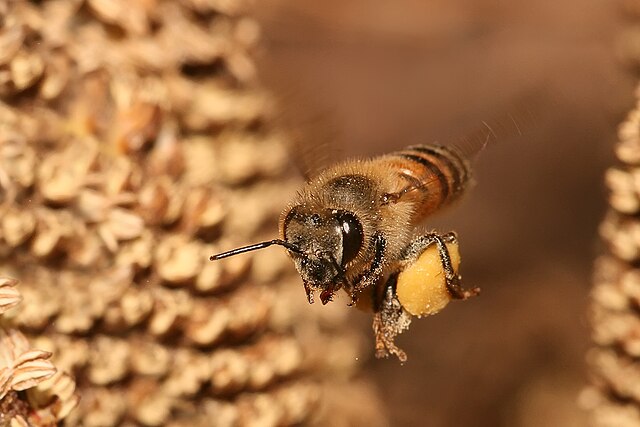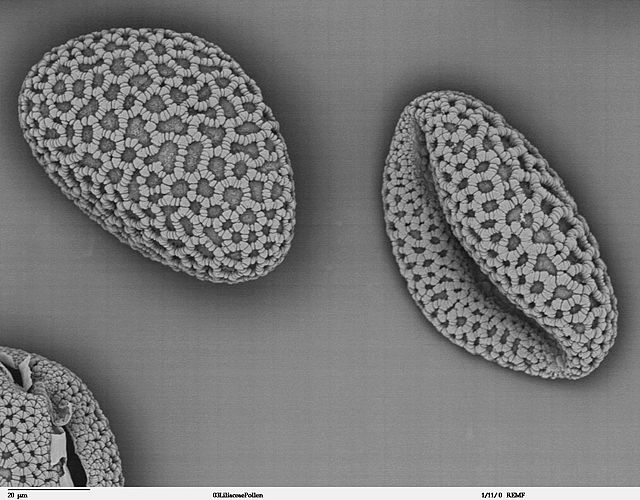The pollen basket or corbicula is part of the tibia on the hind legs of the female of certain species of bees. They use the structure in harvesting pollen and carrying it to the nest or hive where it is used as food by the colony.
A European honey bee with corbicula full of pollen, returning to the hive
Pollen basket on the tibia of the hind leg of a bumblebee
Pollen is a powdery substance produced by most types of flowers of seed plants for the purpose of sexual reproduction. It consists of pollen grains, which produce male gametes. Pollen grains have a hard coat made of sporopollenin that protects the gametophytes during the process of their movement from the stamens to the pistil of flowering plants, or from the male cone to the female cone of gymnosperms. If pollen lands on a compatible pistil or female cone, it germinates, producing a pollen tube that transfers the sperm to the ovule containing the female gametophyte. Individual pollen grains are small enough to require magnification to see detail. The study of pollen is called palynology and is highly useful in paleoecology, paleontology, archaeology, and forensics.
Pollen in plants is used for transferring haploid male genetic material from the anther of a single flower to the stigma of another in cross-pollination. In a case of self-pollination, this process takes place from the anther of a flower to the stigma of the same flower.

Colorized scanning electron microscope image of pollen grains from a variety of common plants: sunflower (Helianthus annuus), morning glory (Ipomoea purpurea), prairie hollyhock (Sidalcea malviflora), oriental lily (Lilium auratum), evening primrose (Oenothera fruticosa), and castor bean (Ricinus communis).
Triporate pollen of Oenothera speciosa
Pollen of Lilium auratum showing single sulcus (monosulcate)
Arabis pollen has three colpi and prominent surface structure.






